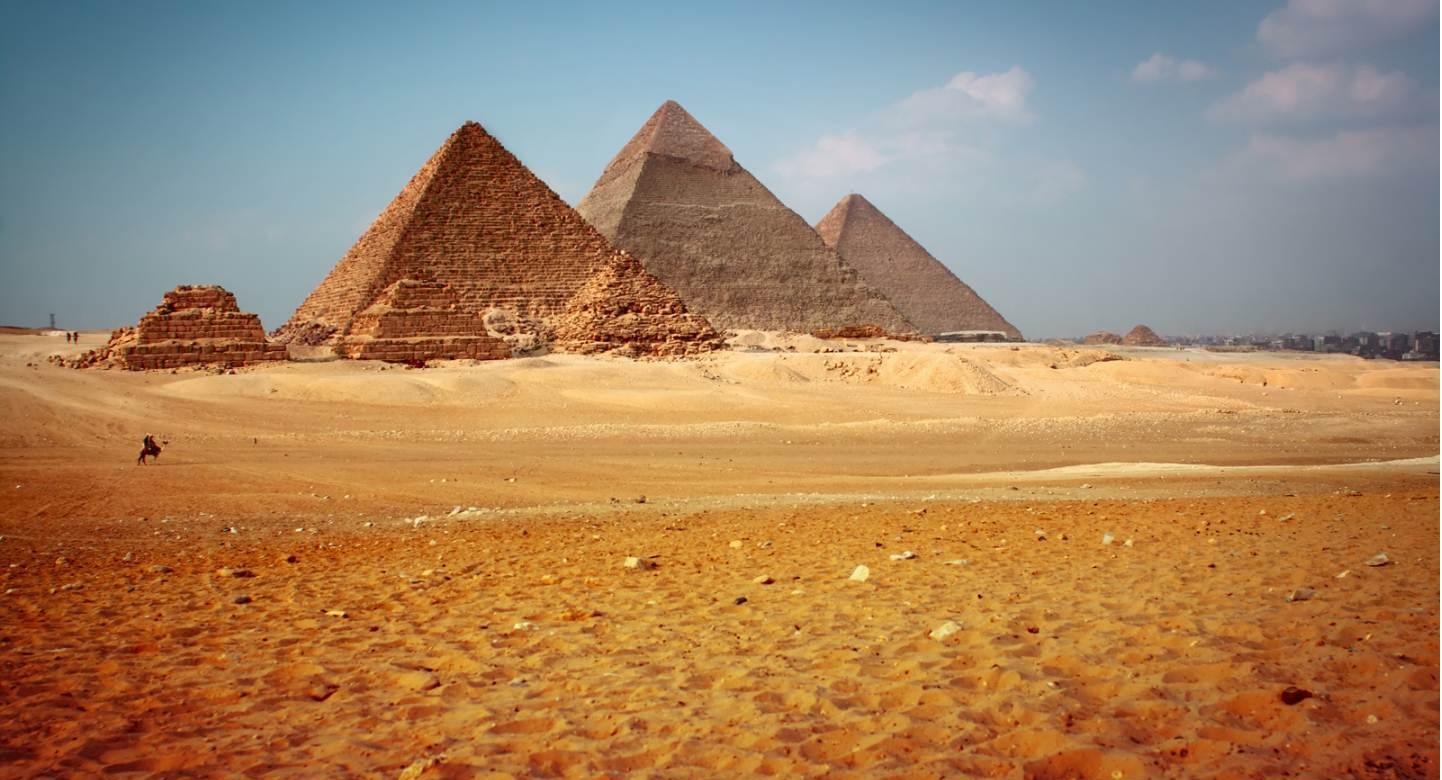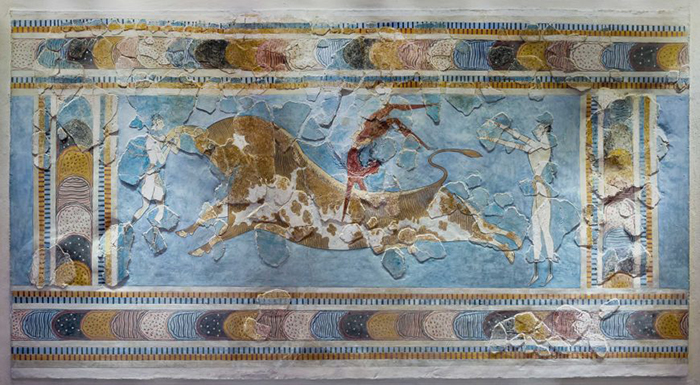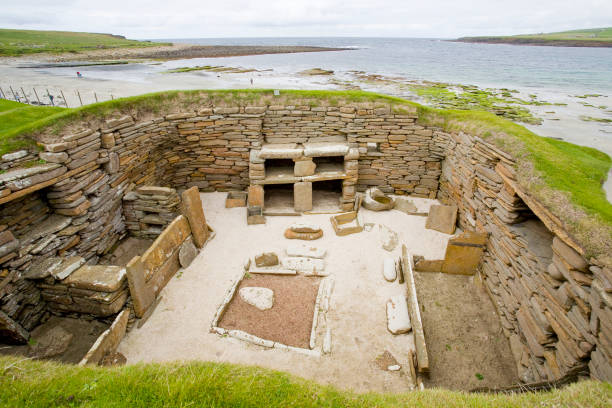From ancient tombs to medieval cathedrals, humans have constructed incredible buildings that have withstood the test of time. Many of the world’s oldest buildings give us a fascinating glimpse into ancient cultures and civilizations. Here are 10 of the oldest and most magnificent buildings that still exist today:
The Pyramids of Giza – c. 2560 BC

The most famous of all ancient buildings, the Pyramids of Giza in Egypt are the oldest of the Seven Wonders of the Ancient World. Built as monumental tombs for the pharaohs Khufu, Khafre and Menkaure, the pyramids were constructed over several decades using enormous limestone blocks weighing up to 15 tons each. An incredible feat of engineering and coordination, the Great Pyramid of Khufu contains over 2 million blocks and originally stood 481 feet (146 meters) tall. Despite being over 4,500 years old, the pyramids remain largely intact and are one of the most recognizable man-made structures on the planet.
Newgrange – c. 3200 BC

Built before the Great Pyramids and centuries before Stonehenge, Newgrange is an ancient stone passage tomb located in Ireland. Constructed around 3200 BC during the Neolithic period, the grass-covered mound is approximately 279 feet (85 meters) in diameter and 49 feet (15 meters) high. The tomb consists of a long passage lined with stone slabs leading to a chamber with three alcoves. What makes Newgrange unique is that it was specifically designed to align with the winter solstice sunrise, which illuminates the inner chamber through an opening called the roofbox. Predating the pyramids, Newgrange is not only one of the oldest buildings in the world, but also an astronomical feat.
Knap of Howar – c. 3700 BC

Located on a remote island off the coast of Scotland, Knap of Howar is one of the oldest preserved stone houses in the world. Constructed around 3700 BC, the Neolithic farmstead consists of two connected stone structures, making it one of the earliest examples of permanent human homes. The walls are made of locally quarried stone slabs stacked up to 5 feet (1.5 meters) thick, creating sturdy rectangular rooms. Entrance passages face the sea, suggesting an intimate connection between the inhabitants and the ocean. Abandoned around 3100 BC, Knap of Howar provides incredible insight into the lifestyle and ingenuity of Neolithic farmers in Scotland.
Mehrgarh – c. 7000 BC

Located in present-day Pakistan, Mehrgarh is one of the earliest known human settlements, inhabited continuously for over 2,000 years. Around 7000 BC, early farmers began building mud brick homes atop the hills near the Bolan River. The city grew over the millennia as inhabitants started producing ceramics, jewelry and complex tools. Remains of multi-roomed houses indicate a level of sophistication and social hierarchy. While the structures themselves have disappeared back into the earth, Mehrgarh provides archaeologists with an unbroken record of civilization in this region, spanning the Neolithic Age to the Bronze Age.
Çatalhöyük – c. 7500 BC

Founded around 7500 BC in southern Turkey, Çatalhöyük was a massive Neolithic settlement comprising densely packed mud brick houses. With no streets or roads between dwellings, the city reached a population of 10,000 at its peak. Residents entered through openings in the roofs and built shrines within the homes. The site provides evidence of domesticated crops, obsidian trade, and intricate mural art of the region’s wildlife. After being mysteriously abandoned around 5700 BC, Çatalhöyük remained hidden for millennia until its rediscovery in 1958. The remarkably well-preserved remains give archaeologists insight into one of the first proto-urban centers.
Knossos – c. 7000 BC

Located on the island of Crete, Knossos was a vast palace complex that served as the capital of the ancient Minoan civilization. First settled in 7000 BC, the site saw the construction of monumental palaces and courts around 1900 BC. The palaces featured advanced architectural features such as drainage systems, columned rooms, frescoes, and baths. Knossos also had a puzzling labyrinth-like layout consisting of 1,500 interlocking rooms connected by corridors. The palaces were eventually destroyed by fire around 1450 BC, perhaps from a catastrophic earthquake or foreign invaders. Extensive excavations in the 20th century uncovered artifacts and ruins, making Knossos a key archaeological site for learning about Bronze Age culture in the Mediterranean.
Skara Brae – c. 3180 BC

On the largest island of the Orkney archipelago off Scotland, Skara Brae is a remarkably well-preserved Stone Age village. Consisting of eight clustered houses, Skara Brae was inhabited between 3180 and 2500 BC before being covered by sand dunes. The stone walls and roofs were intact when excavated in the 1850s, revealing hearths, beds, storage boxes, and other furniture inside. Abandoned quickly for unknown reasons, the contents of the homes gave archaeologists an extraordinary glimpse into daily Neolithic life. Intricate beads, gaming pieces and decorative artwork illustrate a level of sophistication not expected of such an ancient society.
The Sphinx – c. 2500 BC

Carved out of limestone bedrock on the Giza plateau, the Great Sphinx of Giza is one of the world’s largest monolithic statues. With a lion’s body and human head, the Sphinx stands an astounding 66 feet (20 meters) tall and stretches 240 feet (73 meters) long. It was built during the reign of the pharaoh Khafre around 2500 BC to guard the pyramid complex of Giza. Evidence of extensive restoration suggests that the Sphinx was already severely weathered during ancient times. Despite millennia of exposure to the elements, this enigmatic monument endures as a symbol of royal power and the great building abilities of ancient Egyptian civilization.
Stonehenge – c. 3000 BC

The iconic prehistoric stone circle known as Stonehenge stands on the Salisbury Plain of southern England. Erected between 3000-2000 BC, the ring consists of towering megaliths weighing up to 50 tons each. The stones were quarried as far away as Wales and ingeniously assembled into their precise formations. The purpose of Stonehenge remains mysterious, with theories ranging from astronomical observatory to pagan ritual site to burial ground. After 5000 years, Stonehenge has survived natural disasters, deterioration and theft, while remaining one of the most famous Neolithic structures on the planet.
Sechin Bajo – c. 3500 BC

Hidden in a remote desert valley in Peru, Sechin Bajo is an ancient ceremonial center that predates the country’s famous Incan ruins. Italian archaeologists uncovered the site in 2008 after portions emerged from the shifting sands. Dating back to around 3500 BC, Sechin Bajo contains a series of plastered platform mounds, sunken plazas and seven stone circles. The oldest stone structure in the Americas, the circular Plaza Mayor contains a 10-foot (3 meter) tall monolith at its center. Sechin Bajo provides evidence of complex civilization and monument-building abilities that developed in Peru long before the rise of the Incas.
From the deserts of Egypt to the islands of Scotland, humans across the ancient world constructed buildings of astonishing scale and ingenuity that continue to enthrall modern archaeologists and tourists. The oldest buildings offer an invaluable glimpse into societies millennia past and the foundations of human civilization. Though battered by time, these structures endure as testaments to mankind’s early drive to construct lasting monuments using the innovative materials and techniques available in the Neolithic era and Bronze Age. The longevity of these ancient buildings allows us to directly connect to cultures long gone and marvel at the engineering prowess of our ancestors.
Did you like this article? Do not hesitate to share it on social networks and subscribe to Discover the World on Google News to not miss any articles!